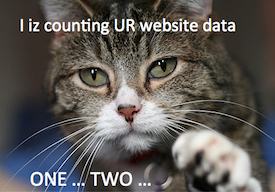 In case you missed it, there’s been plenty of great articles and posts recently asking a very simple question about Facebook: How many Facebook accounts are bullshit due to fraud from click farms? A well-made video kicked off the recent spate of stories on the topic. Here’s a run down of what’s been in the news:
In case you missed it, there’s been plenty of great articles and posts recently asking a very simple question about Facebook: How many Facebook accounts are bullshit due to fraud from click farms? A well-made video kicked off the recent spate of stories on the topic. Here’s a run down of what’s been in the news:
Veritasium on YouTube: Facebook Fraud
Washington Post: This blogger paid Facebook to promote his page. He got 80,000 bogus Likes instead
Salon: Facebook’s black market problem revealed
USA Today: Want fans? Hire a social media ‘click farm’
This of course leads to the natural follow-up question that any marketer should ask: So how much bullshit am I paying for when I buy an ad on Facebook?
I really loved the “Facebook Fraud” video (the first link above, by real-life science geek Derek Muller). However, there are some very big caveats to his video which need to be mentioned. Muller starts off mentioning an experiment run by a BBC reporter back in 2012. The reporter set out to determine what a “Like” was worth by building a Facebook account for something called “Virtual Bagel.” Then, he used Facebook’s ad platform to buy $100 worth of “Likes” … in countries where known click farms come from (gee – wonder if that affected results?).
The lesson here is fairly obvious. If you don’t target your ads (which is fairly easy to do on Facebook ad manager settings) I would imagine that of course you are attracting a lot of bottom-feeders. That’s lesson number one (and keep track because there will be a quiz). Facebook in 2012 since then said it deleted millions of “fake” accounts from click farms — something Muller follows up on by reproducing (more or less) the “Virtual Bagel” experiment.
What he discovered, however, is that nearly all of those new likes he got from a recent experiment were not engaging with his page. So … nothing seems to be solved, and may indeed be getting worse (according to Muller). In fact, it gets more nefarious. Many of these new accounts didn’t appear to come from known “click farm” countries. They seemed to be coming from the US. But there was something odd about these Likes … these accounts “Liked” way too many things to seem natural — and the things these “people” liked were odd.
My own experiment
Recently, I conducted some testing of Facebook (and other) ads for a client. I’m not going to divulge the results, but I will say this. Of the recent Likes we gathered, I decided to look at a representative sample to see if I could find accounts that screamed “click farm” — clearly.
I did not find a torrent of fake accounts. Not by a long shot. You see, I took the trouble to carefully target the ads.
However, I certainly found between 10% and 20% that were suspicious. A few fairly screamed click farm — which seemed to represent about 12% of the total (I looked at a sample of my new Likes — not all of them). Either way you cut it, paying for obvious fraud is not acceptable.
One of the new Likes my client gathered was from a person I’ll only identify as “Sheena.” Because there is a small chance — very, small — that I’m wrong, I won’t identify the account completely. But let me tell you a bit about “Sheena”…
Sheena certainly likes a lot of things. And yet, the only thing on her profile is that this blonde-haired twenty-something is female. Good to know! Oh, and according to her timeline … she changed her cover photo. There are no other posts to see.
Oh, and she sure likes a lot of things. To be specific … 33,000 things. Just to put that number in perspective, if you “liked” five things a day, for every single day of the year, rain or shine, come hell or high water, it would take you 18 years to hit that number. Or let’s say 20 things a day, for every single day of the year for 4 and a half years … Possible, but not plausible.
And it’s not just that Sheena likes so many things (and she’s so young and … blonde … too!) This little OCD like-monkey has quite the unusual taste in what she “likes.” It seems, for instance, that she “Likes” 10,000 restaurants. Which is quite the feat. I’m sure I’ll get to know “Sheena” better when we all see her on a future episode of “My 600-pound life” on the The Learning Channel. And it’s not just that she likes so many restaurants … she even likes every location of a franchise! Isn’t that neat-0!
She also “Likes” the Chicago Blackhawks AND the Montreal Canadiens. If you know hockey, you know how ridiculous that last sentence is. That’s like saying you’re a vegetarian who just LOVES to pick out their own baby cow to kill to make veal patties.
The sad reality is, I don’t really know if Sheena is a click farmer or not. I do know her account fairly screams it. My concern is that … I can’t tell. And that should worry Facebook a lot that people putting money on the table can’t really tell what’s fake and what’s real.
(And yeah, I supposed I should have named the blog “Is Sheena a click farmer?” … but “Sheena is a click farmer” sounds too close to “Sheena is a Punk Rocker” by the Ramones. And I like the Ramones. Suck it Robin Thicke)
I will say this: if you don’t target and test, you are opening yourself up to manipulation by fraudsters. Maybe that’s the price of playing this game. Nonetheless, I doubt there are very many businesses that contain an asterisk in their billing statements that reads “*Your results may vary. Sometimes you’ll be paying for a lot of fraud.”
Enjoy:
Photo credit:By Plismo (Own work) [CC-BY-SA-3.0], via Wikimedia Commons

